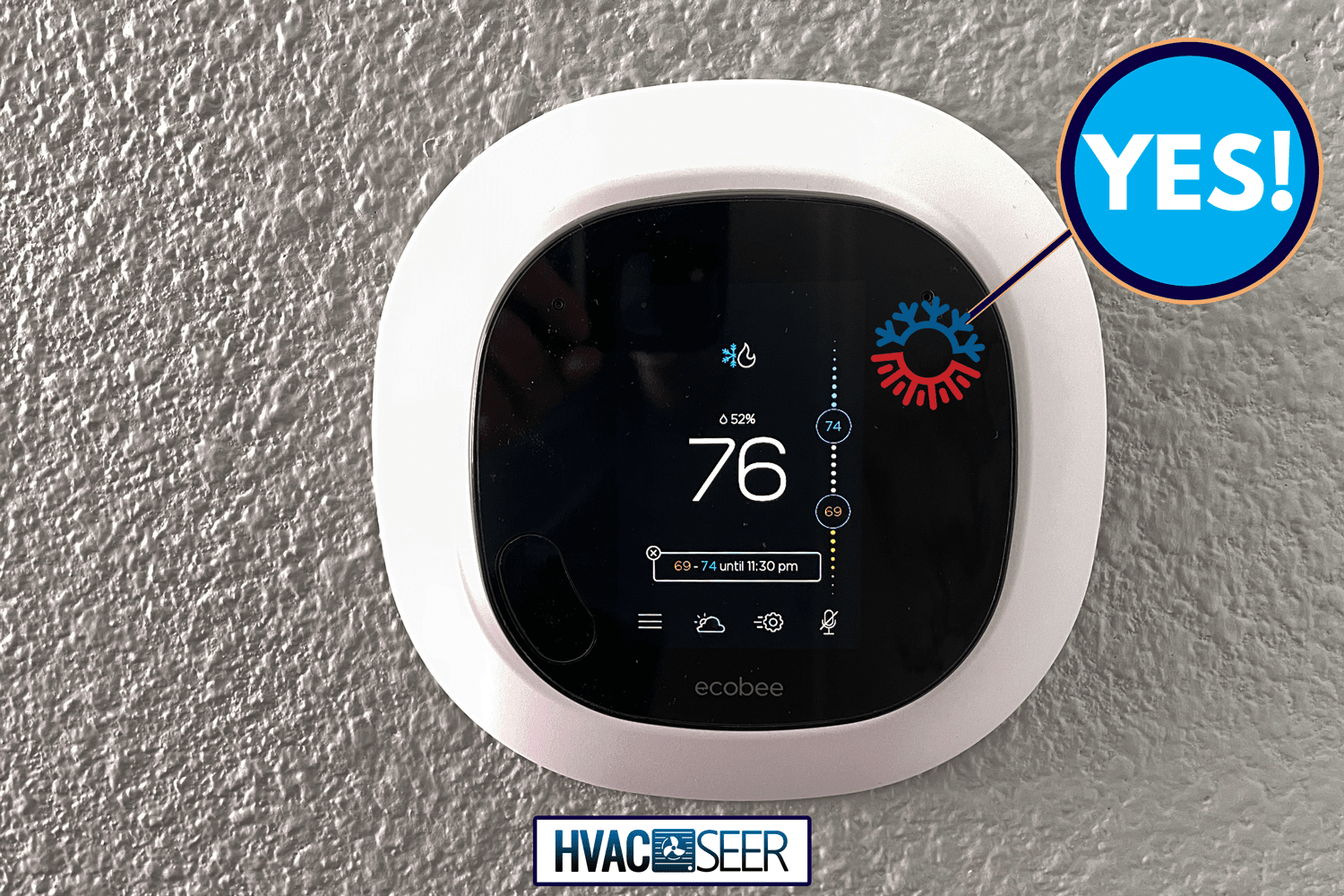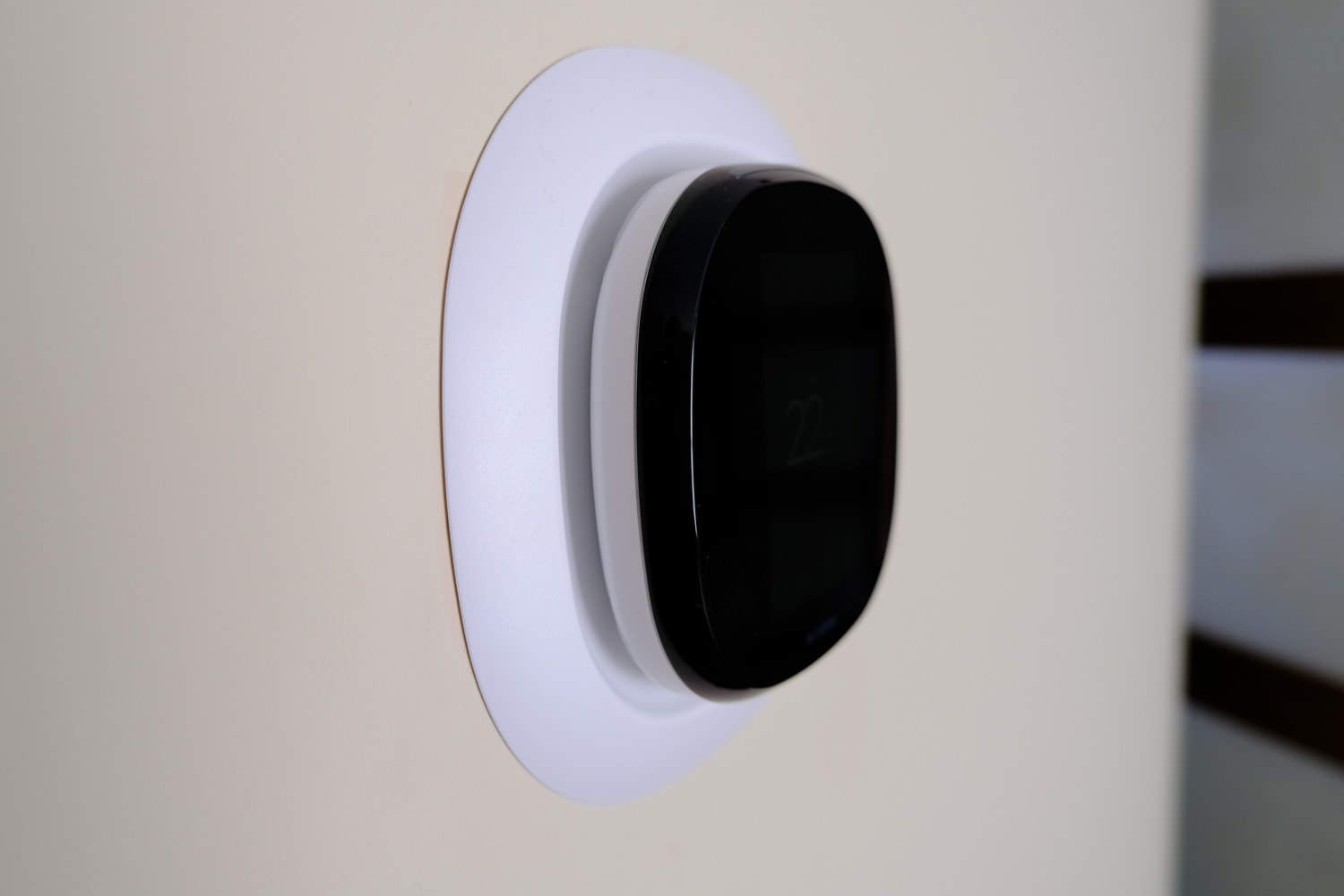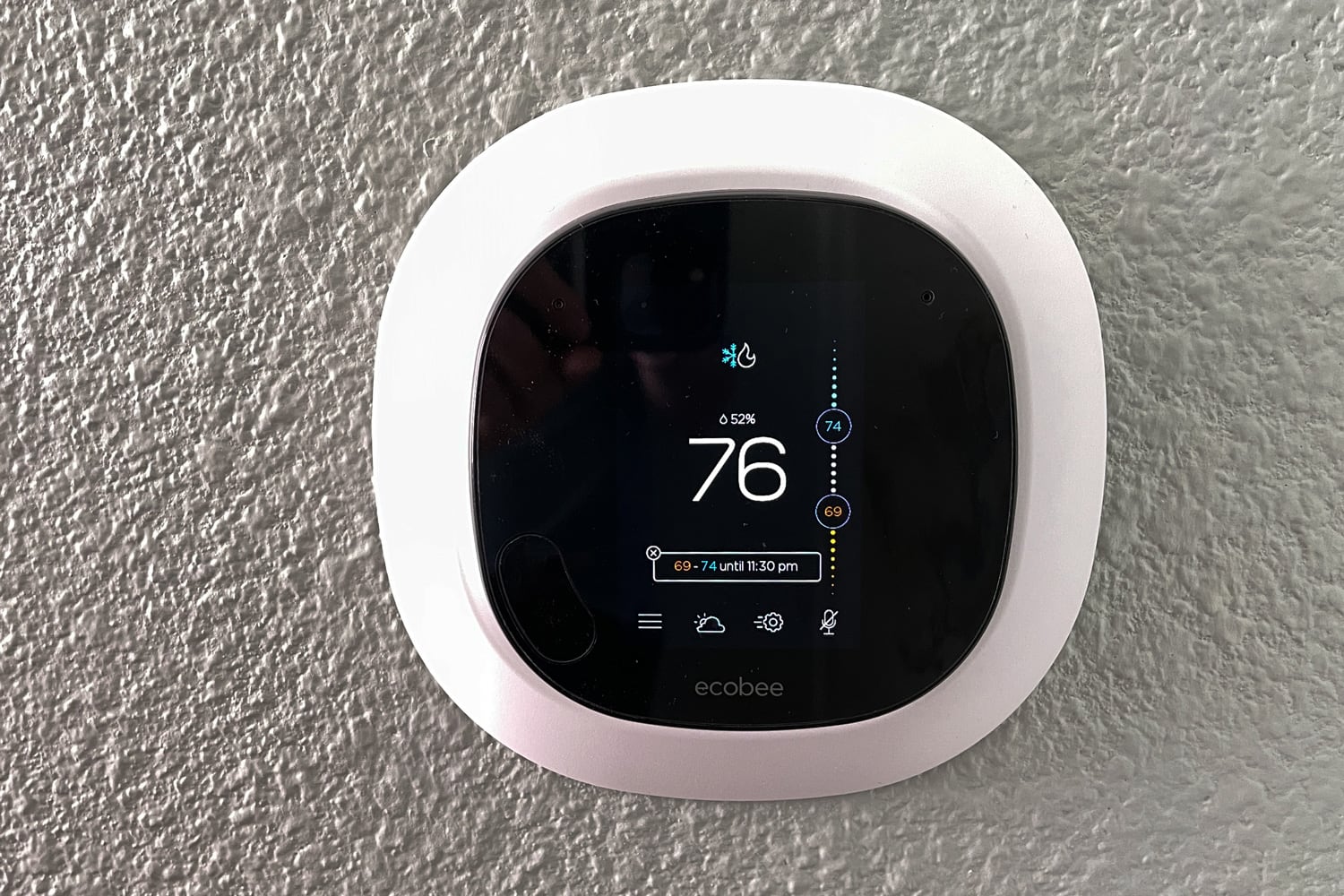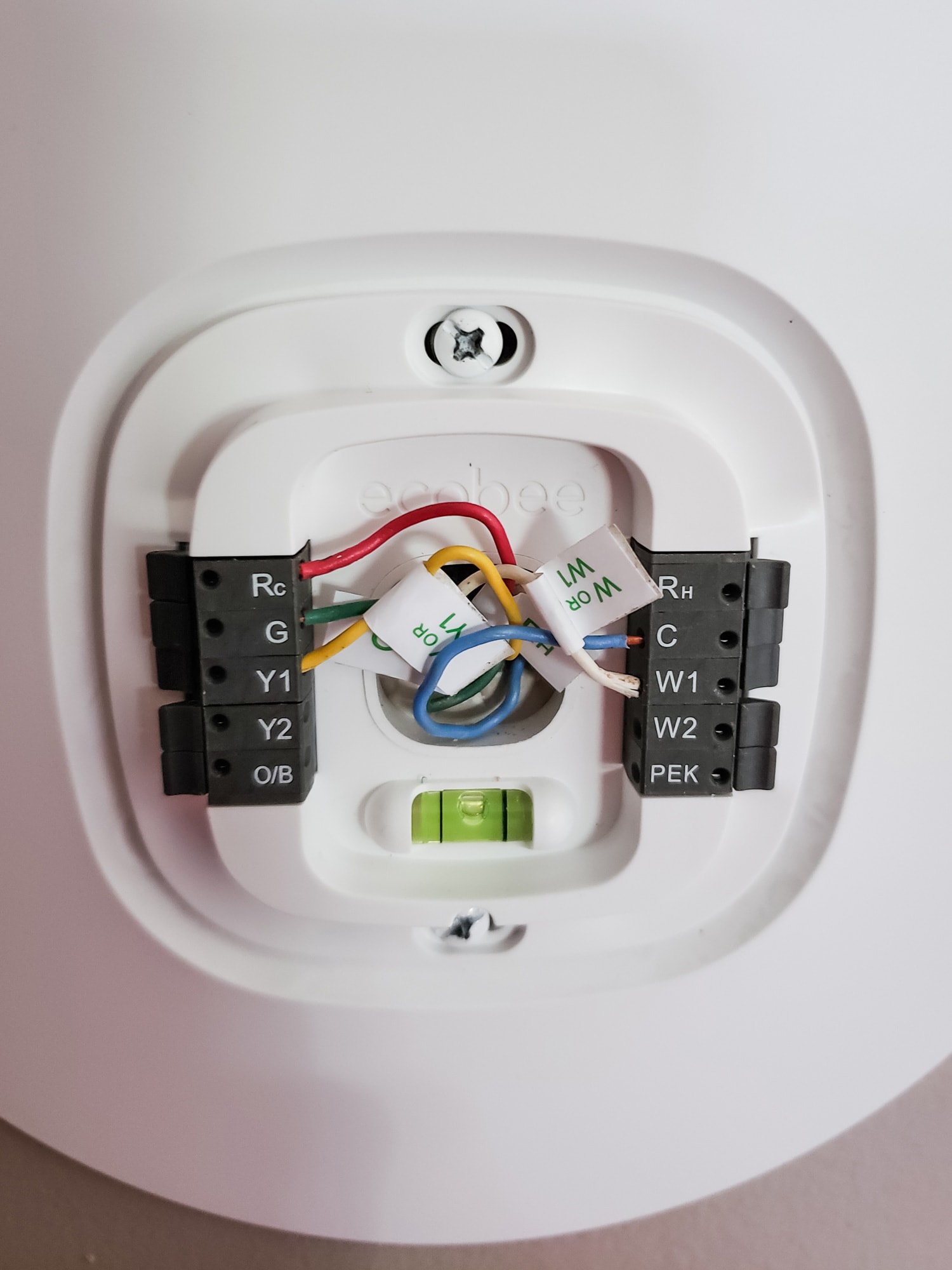If you use Ecobee, you may be wondering if it is a two-stage thermostat and how it affects your HVAC system. What exactly is a two-stage thermostat? Well, to start, smart thermostats like Ecobee help you maintain the temperature in your house from the convenience of your smart device. Don't worry if you are still confused, as we have done all the research for you!
Yes, Ecobee is a two-stage thermostat. This means it supports up to two stages of both heating and cooling. By using the multistage system, Ecobee thermostats are more efficient and use less energy. .
If you want your home's HVAC system to adjust its energy consumption throughout the day, then a two-stage thermostat will work for you. Read on to learn more about the function of two-stage thermostats!

What Is A Two-Stage Thermostat?
While the seasons change, you will want to trust in the ability of your home's heating and cooling system to adjust to the weather. Temperatures vary, so your thermostat needs the functionality to change with it.

A two-stage thermostat can help. This type of thermostat changes your HVAC system's cooling or heating settings to maintain the precise temperature you feel comfortable in. This is called staging.
Compared to single-stage HVAC systems, multistage systems can adjust to household temperature needs without always being at full capacity
Ecobee compares this functionality to hairdryers or ceiling fans that have different speed settings. For example, you will find that you can change the speed to either low or high.
For a two-stage thermostat like Ecobee, these settings are Y1 and Y2 for cooling, and W1 and W2 for heating. How does this type of system conserve energy?
Well, consider how a one-stage HVAC system works. Single-stage systems only work on the same level of heating or cooling with no options for adjustments.
Regardless of how much energy your system needs to exert, a single-stage system will keep running at full blast. Now let's compare the single-stage function to the two-stage function.
Bigger homes or homes in significantly hot or cold climates would benefit more from a two-stage system. These homes can be a little harder to heat or cool.
If you leave your system on at full blast all the time, then you are bound to rack up energy costs. Adjusting the stage of heating or cooling with your thermostat can be a great solution and this is one of the main features that Ecobee offers.
Click here to see Ecobee Thermostat with Voice Control on Amazon
Click here to see Ecobee Lite Thermostat on Amazon
What If My HVAC Has More Than Two Stages?

Some HVAC systems can come in more than two stages. For example, some have a third stage with Y3 and W3. Ecobee thermostats can only support up to two stages.
Does this mean an Ecobee thermostat will be incompatible? Not necessarily! There are three workarounds that Ecobee suggests when installing your thermostat into an HVAC system that has more than two stages.
We discuss these workarounds below. Make sure your system is properly powered off so you can safely work with your thermostat and HVAC equipment.
Only Use Stages One and Two
The first option is not to use your system past the second stage. This is the most basic workaround, since it simply requires you to ignore the third stage altogether.
Even if you tried, the third stage will not work with your thermostat regardless. You can address this during installation by wrapping electrical tape around the W3 or Y3 wire to put aside behind the thermostat.
This option is best for people who cannot or do not want to access the HVAC equipment.
The only caveat of this option is that your HVAC system's third stage will be completely inaccessible unless you replace your Ecobee with a compatible thermostat.
Bypass the Second Stage
If you need to use the third stage, then you can just skip the second stage altogether. Through this option, your thermostat will only be able to turn your system to either its lowest stage or at full blast.
You will also need access to your HVAC equipment to bypass the second stage of heating or cooling. If you are not used to working with your HVAC equipment or electronics in general, we do not suggest this method.
If you can, you need to access your HVAC system control board. Here, you can connect a jumper wire between the second and third stages. This would be between either Y2 and Y3 or W2 and W3.
Doing this allows your thermostat to bypass the second stage. When you try to switch it to the second stage, it will go straight to the third stage instead.
Install an On-Time Delay Device
Sometimes called a Delay On Make Timer, an On-Time Delay Device is the most advanced option. With this device, you can make all three stages work even if your thermostat only has two stages.
The way that this works is that after some time, the third stage will engage right after the second stage. Since this method is not as easily accessible as the first two, you will need to hire an HVAC technician.
Trying to do more complex procedures on your own can risk damage to your equipment or even accidents. If you are unsure how to work on your system, it is best to call on an expert.
Can I Install An Ecobee Thermostat Myself?

Installing your thermostat can totally be a DIY job. When you purchase an Ecobee, it comes with installation instructions.
On your own, installation can take up to 45 minutes. You can also find these instructions in the Ecobee mobile app.
Depending on the type of system you have, you will need different wires for your Ecobee. One thing to note when installing is that you need a common wire, also known as a C wire.
Without a C wire, you can use the included Power Extender Kit (PEK) that comes in your Ecobee box. The PEK should be able to work in place of the C wire in most systems except for heat-only and dual-transformer systems.
You may be wondering if your HVAC system is compatible with an Ecobee thermostat. Most 24-volt systems are, but if you want to be completely sure, you can check out Ecobee support.
How Long Do Ecobee Thermostats Last?

A standard thermostat is expected to last for up to ten years, so by that standard, an Ecobee thermostat should last for just as long. The batteries, on the other hand, only last up to four years. You can easily replace them.
Ecobee has been making smart technology since 2007. Since the turn of the millennium, technology, as we know it, has been rapidly developing.
You may find yourself switching or upgrading your tech far more quickly nowadays. This can happen regardless of whether the device you own is still working perfectly or not.
Though it is possible to replace your thermostat before the ten-year mark, we suggest you only do so if necessary. Consider your lifestyle and energy costs when choosing a thermostat for your home.
Aside from being one of the biggest brands when it comes to smart technology, Ecobee is recognized energy efficiency. Switching your device too early for the sake of an upgrade defeats the purpose of the energy efficiency that Ecobee touts.
Wrapping Things Up
Smart devices make everyday living a little more convenient. The advancements Ecobee makes by supporting energy efficiency with its two-stage thermostat are definitely a plus.
In addition to its basic functions, the Ecobee thermostat can feature voice control with both a WiFi connection and a digital display. You can install an Ecobee thermostat on your own in less than an hour.
Whether you already own one or are considering one, keep in mind that the thermostat's companion app and instruction manual can always be referenced when needed.
We hope this post answered your questions! If you want to learn more, you can check out these articles before you go:


